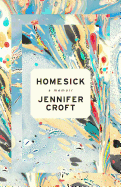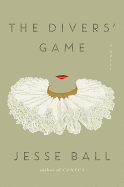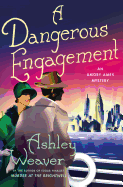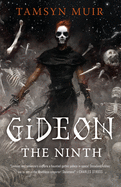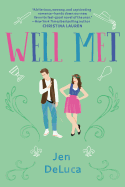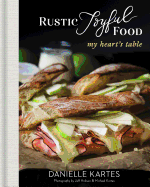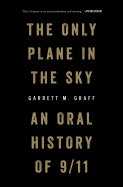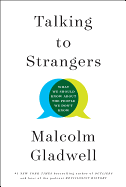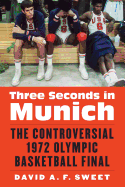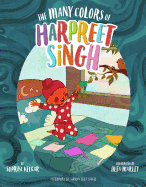Tuesday, September 10, 2019
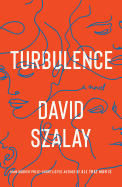 I've been reading about wind lately, and realized we're always reading about wind. Consider a beautiful passage in Michael Ondaatje's The English Patient (Vintage) that could be a wind prayer ("There is a whirlwind in southern Morocco, the aajej, against which the fellahin defend themselves with knives. There is the africo, which has at times reached into the city of Rome...."). Or David Szalay's mesmerizing novel Turbulence(Scribner), where diverse yet connected characters circumnavigate the globe like pressure systems.
I've been reading about wind lately, and realized we're always reading about wind. Consider a beautiful passage in Michael Ondaatje's The English Patient (Vintage) that could be a wind prayer ("There is a whirlwind in southern Morocco, the aajej, against which the fellahin defend themselves with knives. There is the africo, which has at times reached into the city of Rome...."). Or David Szalay's mesmerizing novel Turbulence(Scribner), where diverse yet connected characters circumnavigate the globe like pressure systems.
Go back in time:
So he agreed to help me, and he gave me
a bag of oxhide leather and he tied
the gusty winds inside it. Zeus, the son
of Cronus, made him steward of the winds,
and he can stop or rouse them as he wishes.
Emily Wilson's brilliant translation of The Odyssey (Norton) reminds us that this precious gift from Aeolus, Keeper of the Winds, did not work out so well for Odysseus after his greedy crew opened the bag and unleashed, literally, an epic gale.
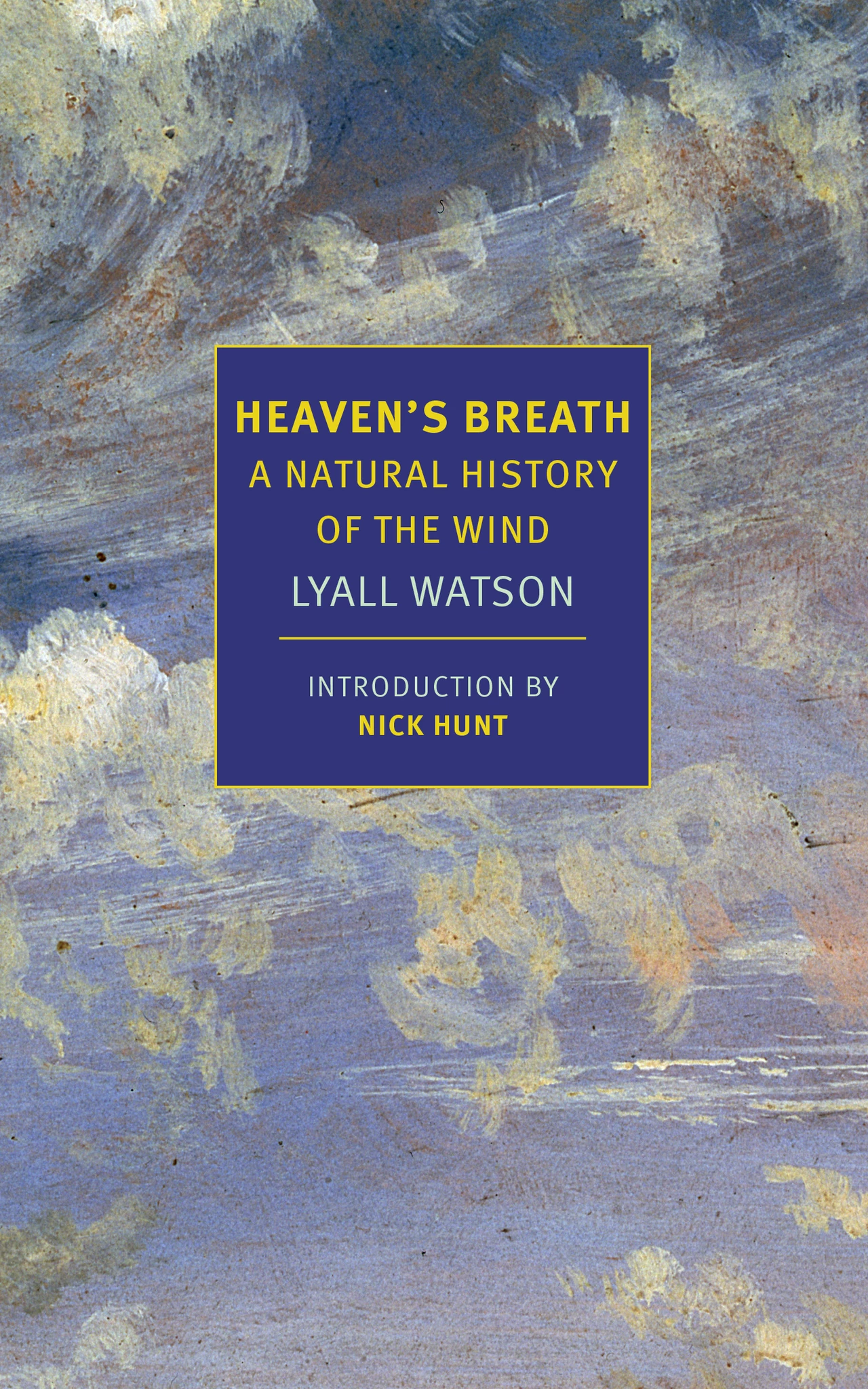 "The book in your hands is that oxhide sack. All the winds of the world are inside," Nick Hunt writes in his introduction to the NYRB Classics reprint of Lyall Watson's fascinating 1984 work, Heaven's Breath: A Natural History of the Wind. I love this book. It alters your perception of Earth.
"The book in your hands is that oxhide sack. All the winds of the world are inside," Nick Hunt writes in his introduction to the NYRB Classics reprint of Lyall Watson's fascinating 1984 work, Heaven's Breath: A Natural History of the Wind. I love this book. It alters your perception of Earth.
"Living, as we do, at the bottom of an ocean of air, it is easy not to look up. To see only our immediate environment in two-dimensional terms," Watson observes. "Wind is invisible. Which immediately puts it into a category of things like love, hate and politics that we find difficult to explain, and impossible to ignore."
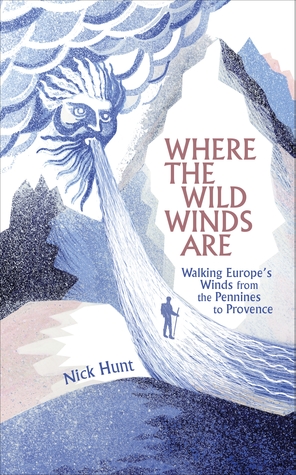 After Watson I read Hunt's Where the Wild Winds Are: Walking Europe's Winds from the Pennines to Provence (Nicholas Brealey), in which he chronicles his 2016 pilgrimage along the routes of several European winds, noting: "These were journeys into wild wind, but also into wild landscapes and the people who inhabit them; they were also, inevitably, journeys into myself."
After Watson I read Hunt's Where the Wild Winds Are: Walking Europe's Winds from the Pennines to Provence (Nicholas Brealey), in which he chronicles his 2016 pilgrimage along the routes of several European winds, noting: "These were journeys into wild wind, but also into wild landscapes and the people who inhabit them; they were also, inevitably, journeys into myself."
The Grammarians
by Cathleen Schine
When they were children growing up in Larchmont, N.Y., Laurel and Daphne Wolfe were essentially fused particles; their mother feared that her identical twins wouldn't fit in as they went through life because "they seemed to fit nowhere but with each other." When they were five, their father brought home an anvil of a dictionary, sparking the twins' obsession with words, which, while initially a shared passion, ended up coming between them. Could it be that all the words in the world can be insufficient when it comes to making amends? In its opening chapter, which is set when the sisters are middle-aged, The Grammarians reveals that they haven't spoken in years.
When each twin's attempt to hone a distinct identity through attending a different college failed, they both transferred to Pomona in California, after which they began their truly adult lives in an apartment in Manhattan's East Village in the late 1970s. Obliged to find work to pay the bills, the sisters moped down different career paths (Daphne took a job at an alternative journal, Laurel as a kindergarten teacher), but both later found their true callings: working with words, one grammatically, the other artistically.
Schine lays all this out with the deliberateness of someone setting a table with the good china. Her 11th novel, which follows note-perfect outings that include The Three Weissmanns of Westport and Fin & Lady, burbles with her customary witty and exacting observations. Neither Wolfe sister may feel that she will ever achieve her dream of landing on exactly the right words, but Schine pretty much finds them all. --Nell Beram, author and freelance writer
Discover: This sharp-witted novel x-rays the relationship of twin sisters who begin life with a love of words that later tears them apart.
The Divers' Game
by Jesse Ball
Jesse Ball (Census) has fashioned a modern allegory about the brutality of society in his dark dystopian novel The Divers' Game.
In this imagined world, humans are divided into two groups, quads and pats. The former are refugees who flood into this unnamed first-world country, much to the chagrin of the pats, the existing citizens. The clash between these two groups leads to a series of inhumane laws. Quads are relegated to slums in the outskirts of the cities, where the rule of law hardly exists, and abusive guards, called helmets, reign by force. Quads are marked with a brand on their faces and their dominant thumbs are removed; this is how they're identified. Pats, living in the supposedly civil areas of the city, carry gas masks and gas canisters at all times. They are trained to use the gas to kill any unwanted quads in their neighborhoods. Laws have been changed so that pats may kill quads as they wish, without cause.
What makes this novel exceptional is the way Ball navigates this horrific world. It would have been easy to follow dystopian tropes, like setting up the quads for a rebellion. But that's not what Ball has in mind. He studies these two groups of people closely, allowing strange cultural practices to develop where human life is worth little. He's like an anthropologist of his own creation.
The Divers' Game is strange and gripping. Ball can be forgiven the sense of fatalism that pervades the work because the world he has created is not unlike our own. --Scott Neuffer, writer, poet, editor of trampset
Discover: This disturbing dystopian novel imagines human differences being taken to violent extremes.
Mystery & Thriller
A Dangerous Engagement
by Ashley Weaver
In A Dangerous Engagement, the sixth entry in the Amory Ames mystery series by Ashley Weaver, Amory and her husband, Milo, leave their native England for a wedding in New York City. Milo grumbles about visiting a city under Prohibition, but Amory is excited to be a bridesmaid in the wedding of her childhood friend, Tabitha Alden.
But soon after Amory and Milo arrive to stay at the spectacular Alden home, they discover that the groom may not be quite what he seems. And then, to everyone's shock, the best man is gunned down on the front steps of the mansion. With rumors of rum-runners abounding, Amory cannot resist infiltrating a speakeasy that belongs to the notorious gangster Leon De Lora, even after Milo warns her away. But she quickly finds herself in danger, and nearly loses her life in a burning warehouse. Can Milo and Amory team up to catch a killer, or will the killer catch them?
Fans of Maisie Dobbs or Lady Georgiana Rannoch who have not yet encountered Amory's enthusiastic schemes are sure to love this addition to the female detective pantheon. Amory and Milo are equally at ease in their upper-crust world and in the questionable areas of Prohibition New York, and the glinting humor in their relationship makes for enjoyable reading. A Dangerous Engagement is a charming mystery full of intriguing historical detail, which can either be read as a standalone, or as a new entry in a delightful series. --Jessica Howard, bookseller at Bookmans, Tucson, Ariz.
Discover: In this charming historical mystery, an intrepid amateur detective investigates the death of a groomsman in Prohibition-era New York.
Science Fiction & Fantasy
Gideon the Ninth
by Tamsyn Muir
In her debut novel, Tasmyn Muir positions her protagonist, Gideon Nav, amid foreboding gothic spaces and reanimated skeletons. It would be a stretch to describe Gideon as grounded--her awe-inspiring talent as a swordswoman is on repeated display--but she is perfectly happy to puncture the stuffy, self-serious air of her companions with crude jokes, puns and even a well-timed "that's what she said."
The novel's action kicks off when Gideon finally receives a chance to leave her oppressive home planet as a cavalier, a kind of bodyguard. The Emperor has summoned representatives from the nine houses--a necromancer and a cavalier from each--to a huge, decaying palace where the houses will vie against each other to discover ancient necromantic secrets and attempt to become Lyctors, demigod-like members of the Emperor's inner circle. It's complicated. Thankfully, Muir grounds the strangeness in a few familiar conceits. When necromancers and cavaliers start to die in mysterious fashion, the novel begins unexpectedly to resemble a locked-room mystery, or perhaps even a particularly demented slasher movie.
The crux of the novel is the relationship between Gideon and her necromancer, Harrowhark Nonagesimus. Gideon and Harrowhark have carried on a vicious, sometimes violent feud since they were children, with its roots in a horrible tragedy. Despite their antagonism, they have an undeniable emotional connection, and much of the book's most interesting character work lies in deepening and complicating their relationship.
When it comes to epic fantasy, it's difficult to imagine a more purely fun read than Tasmyn Muir's Gideon the Ninth. --Hank Stephenson, bookseller, Flyleaf Books, Chapel Hill, N.C.
Discover: Gideon the Ninth is a dense, impressively imagined debut about necromancers and swordswomen that wears its heart--and gonzo sense of humor--on its sleeve.
Romance
Well Met
by Jen DeLuca
First impressions lead to weeks of tension in Well Met, a debut slow-burn romance from Jen DeLuca. English teacher Simon is determined to maintain his late brother's legacy, the local Renaissance fair. Emily arrives in town, adrift after a bad breakup and staying for the summer to help her sister recover from a car accident. Everything's going smoothly until her niece announces that in order for her to participate in the local Ren fair, Emily needs to step into her sister's shoes and volunteer for the duration. When Emily uses humor to mask her imposter syndrome, perfectionist Simon thinks her jokes mean she isn't taking the fair seriously. Scowls and snappish comments abound, with two good-hearted adults assuming the worst about each other.
As the fair itself progresses, Emily becomes Emma, a flirty tavern wench, and Simon takes the role of swoony pirate Blackthorne. Through the pretense, their stage-flirting becomes something more real and more confusing. Despite the misunderstandings, these two characters are doing their best, trying to balance familial duty with personal goals. The resolution to all this mess is a happy ending for them as individuals and as a couple, satisfying in its completeness without relying on clichés.
Well Met will especially appeal to readers who like bookstores, Renaissance fair shenanigans and nerdy English teachers wearing vests. DeLuca will have readers laughing all the way to the turkey leg vendor. --Suzanne Krohn, editor, Love in Panels
Discover: For fans of enemies-to-lovers romance, Shakespeare-spouting pirates and Renaissance fairs, Well Met is a charming debut.
Food & Wine
Rustic Joyful Food: My Heart's Table
by Danielle Kartes
Danielle Kartes begins Rustic Joyful Food: My Heart's Table with the story of the journey that led to its creation: a failed bistro, a saved marriage, the loss and rebirth of her lifelong love of cooking, the often difficult creation of the food-based business, of which the cookbook is one part. Joy is not something Kartes takes for granted.
Kartes is not a trained chef. Self-taught, she is eager to share what she knows with home cooks. Her clearly written recipes include helpful information about techniques (how to remove the skin from a tomatillo) and occasional encouragement (it may take several tries before you season your cast-iron skillet to no-stick perfection).
The recipes in Rustic Joyful Food straddle the line between aspirational and family-friendly: a recipe for a Spanish-inspired braised chicken with olives is followed by a four-page spread on hotdogs, both accompanied by Jeff Hobson and Michael Kartes's beautiful photographs, styled by Kartes herself. The end goal isn't to get dinner on the table quickly, but none of the recipes call for extensive prep time or fussy techniques. She highlights fresh flavors and a range of produce that reflects her home in the Pacific Northwest, but does not call for ingredients that are hard to find outside of large cities or foodie meccas.
The result is a cooking style that is both familiar and creative. And, in fact, the book ends with Kartes's hope that readers will adapt her recipes to make them their own. --Pamela Toler, blogging at History in the Margins
Discover: Rising Seattle food star Danielle Kartes shares recipes from her home kitchen.
Biography & Memoir
Homesick
by Jennifer Croft
Jennifer Croft's Homesick is a startling memoir, stylistically as well as in its content and in the unusual personality it reveals.
Amy and Zoe are very close. This is the defining feature of their young childhood and arguably beyond. The sisters grow up in Tulsa, Okla., where their mother worries over all the possible disasters in the world and their father teaches college. Then the younger sister, Zoe, has her first seizure, and their lives become dominated by more seizures, hospitals, surgeries; the girls are both home-schooled from then on. A tutor, Sasha, comes in the afternoons to teach Zoe Ukrainian and Amy Russian--the girls' choices. Amy loves numbers and letters; she is entranced by the Cyrillic alphabet. Partly out of devotion to Sasha, she throws herself into this study with all her considerable will. At age 15, Amy enters college, and this separation from her sister is both catastrophic and necessary.
This memoir is told in a close third person from Amy's perspective--that of Croft's persona--and interspliced with photographs captioned by an ongoing direct address, apparently from Amy to Zoe in a later time. Disjointed, sometimes heavy with foreshadowing, lush with a love for words and language, the dual narrative of the sisters' intertwined lives and shared pain seems the right artistic choice for this twisting story.
Homesick is astonishing in its emotional reach, its evocation of a child's discovery and a young adult's suffering and all the wonder of words. What is translatable is perfectly communicated here. --Julia Kastner, librarian and blogger at pagesofjulia
Discover: This stunning memoir with photos is a love letter from one sister to another, a celebration of language and a story of devotion and disaster.
History
The Only Plane in the Sky: An Oral History of 9/11
by Garrett M. Graff
Journalist and historian Garrett M. Graff (The Threat Matrix) has assembled an outstanding and emotionally wrenching oral history of the September 11, 2001, terrorist attacks that killed nearly 3,000 people in New York, Virginia and Pennsylvania. As with the assassination of John F. Kennedy, everyone who lived through the 9/11 attack remembers where they were, and has a story. Thousands of these memories have been collected, edited and arranged for a chronological retelling of those harrowing events.
The title refers to the eight hours President George W. Bush and his aides were on Air Force One, circling the skies. The FAA had grounded all other planes after four commercial jets were hijacked with the intention of crashing them into New York City's World Trade Center's twin towers and the Pentagon and U.S. Capitol in Washington, D.C. Three targets were hit. The fourth plane, which intended to attack the Capitol, was stopped when its heroic passengers sought to wrest control of the plane from its hijackers. The plane crashed in Pennsylvania, killing all 44 aboard, before it could be used as a missile. The personal memories of survivors, loved ones of those who died, first responders, politicians and news people are heartrending. One man is pulled out of the rubble of the fallen towers and rushed to the hospital, where he expects to see thousands of injured: "I said, 'Where is everybody?' They're like, 'You're it.' "
Hypnotic and profoundly heartbreaking, these first-person remembrances intensify the emotion of that day. This is a book readers will never forget. --Kevin Howell, independent reviewer and marketing consultant
Discover: The shocking, frightening and profoundly moving events on September 11, 2001, are relived through thousands of first-person memories in this unforgettable oral history.
Social Science
Talking to Strangers: What We Should Know About the People We Don't Know
by Malcolm Gladwell
"Prejudice and incompetence go a long way toward explaining social dysfunction in America. But what do you do with either of those diagnoses aside from vowing, in full earnestness, to try harder next time?"
This is the question that author and journalist Malcolm Gladwell (The Tipping Point) strives to answer in Talking to Strangers. It's a slightly anticipatory title, given that Gladwell's focus isn't on the act of conversation with someone perceived as different, but on the common psychological stumbling blocks that could lead to--and indeed, have resulted in--misunderstandings and misperceptions on a grand scale. Gladwell demonstrates that having this awareness is imperative to dealing with a world that is increasingly full of encounters with people who may not share one's perspectives, beliefs or values.
Most of the stories in Talking to Strangers involve familiar, high-profile cases, and Gladwell ties these seemingly disparate incidents together to demonstrate that the human brain tends to "default to truth"--an instinctual, intrinsic belief that our interactions with people are genuine and honest. It's counter-intuitive to the mistaken perception that people are automatically distrusting and cynical.
Like much of Gladwell's work, Talking to Strangers carries relevance for the contemporary moment. American discourse is full of anger, distrust and hostility. While people's preferred interactions are with those we perceive as sharing similar viewpoints, that is an unrealistic expectation today. By enlightening readers about the inner workings of the mind when encountering someone who appears different, Gladwell offers a roadmap for more positive conversations, engagement and interaction. --Melissa Firman, writer at melissafirman.com
Discover: Malcolm Gladwell examines the dynamics behind several memorable news stories and personalities to shed light on how we communicate with strangers.
Sports
Three Seconds in Munich: The Controversial 1972 Olympic Basketball Final
by David A.F. Sweet
"They're all gone." These enduring words of sportscaster Jim McKay announced the murder of 11 Israeli Olympians by Palestinian terrorists at the 1972 Games. Three Seconds in Munich adeptly scrutinizes the infamous basketball tournament between the U.S. and the Soviet Union that took place at the same Games, and sportswriter David A.F. Sweet (Lamar Hunt) strikes a perfect balance in discussing both events.
Sweet takes the gracious risk of losing his audience to anguish by leading with the hostage crisis and not paying mere lip service to the horror. In doing so, he gains crucial trust in a story calling out collusion and game-fixing at one of the highest levels of sport.
Mere days after the massacre, following an undefeated 36-year Olympic streak spanning a "borderline-ridiculous sixty-two games," the U.S. lost to the Soviets 51-50 in the gold medal game. But officials twice added three seconds back on the clock--once after time had expired and the U.S. had won the gold.
Three Seconds is painstakingly researched. While Sweet exposes conspiracy and wrongdoing, he does not discount other elements working against the U.S. team, including coaching style, politics and a dearth of players due to rules prohibiting professional athletes (seemingly overlooked on the Soviet front).
Sweet does a stellar job of pulling emotional strings and revealing how "encountering the evil of terrorism and suffering an excruciating, unjust" loss in only a four-day span continues to affect the players. --Lauren O'Brien of Malcolm Avenue Review
Discover: A detailed exposé of the controversial 1972 Olympic basketball gold medal match, and the stunning finish that gave the Soviets a gold medal.
Children's & Young Adult
The World Ends in April
by Stacy McAnulty
To Eleanor Dross, middle school is the worst. But thanks to her overly enthusiastic best friend Mack, whom she has known since kindergarten, it's survivable. Lately, though, mean girl Londyn has been making Eleanor's life miserable and, even worse, Mack keeps talking about transferring to a boarding school for the blind.
When Eleanor stumbles onto a questionable website that claims an asteroid will strike Earth in April--"Code Red. Certain collision. Expect global catastrophe."--she's more intrigued than concerned. Her Grandpa Joe is a prepper, "someone who spends their time and money preparing for the apocalypse," so she knows how to prepare for the worst. And if TEOTWAWKI (the end of the world as we know it) means the end of middle school and an end to Mack's plans to leave, how bad could it really be? When an overheard lunch conversation between her and Mack piques the interest of other kids, Eleanor finds herself the inadvertent president of Nature Club, a secret survival group preparing students for the apocalypse, and her lonely life begins to change drastically.
Author and mechanical engineer Stacy McAnulty (The Miscalculations of Lightning Girl) has created an endearing heroine in Eleanor, a social outcast who hates math homework and slumber parties with equal vehemence. Despite the lone-wolf mentality she projects, it is only her tenacious belief in the predicted catastrophe that shields her from more personal anxieties about losing her best friend and the stresses of middle school social orders. Filled with information about NEOs (Near-Earth Objects), survival prep and a history of Earth's extinction events, The World Ends in April is a smart, funny and emotionally candid book about surviving in the world, whether an asteroid collision is imminent or not. --Jennifer Oleinik, freelance writer and editor
Discover: Social outcast Eleanor prepares for an imminent asteroid collision with Earth while simultaneously surviving the tribulations of middle school.
The Many Colors of Harpreet Singh
by Supriya Kelkar, illus. by Alea Marley
Supriya Kelkar's debut picture book, The Many Colors of Harpreet Singh, affirms through a Sikh boy and his colorful patkas ("a common style [of turban] for young boys") that there is beauty and boldness in self-love and friendship.
Illustrator Alea Marley immediately captures the attention of readers with title page art, extending across two pages, depicting the leaping figure of Harpreet, a swirling rainbow of all the colors he loves whooshing behind him. The first page of the book opens on a joyous Harpreet foregrounded against a muted pastel print, reveling in his love of colors. Through the pages, we see the different ways Harpreet uses patkas to express his emotions: yellow when he feels "sunny," red for courage, gray when he's sad. Recently, he has been wearing white for feeling shy, which, now that he and his parents have moved across the country, is often the case at his new school.
Brilliant, brief text provides easy forward movement and fun moments for a read aloud, like the alliterative "He wore pink... bopping along to bhangra beats." Marley's digital illustrations include full-page spreads and smaller isolated scenes showcasing a gorgeous palette of colors and subtle indicators of the challenges faced by Harpreet in his new community. One page shows the various incorrect ways classmates spell his name on valentines; another shows everyone curiously examining his lunch. An enlightening afterword from professor of Sikhism Simran Jeet Singh shares important context about the Sikh religion and the role of turbans as social equalizers. --Breanna J. McDaniel, freelance reviewer
Discover: This bright, vivacious picture book captures a spectrum of emotions as a young boy shows off his colorful head coverings.
Discover Great Publishers
When All You Have Is a Hammer...
David Shannon
 |
|
|
David Shannon |
|
David Shannon grew up in Spokane, Wash., and graduated with a BFA in illustration from Art Center College of Design in Pasadena, Calif. In 1983, he moved to New York City and worked as a freelance editorial illustrator. David's work appeared in many publications, including Time, Newsweek, Rolling Stone and the New York Times, as well as numerous book jackets and posters. In 1988, he began illustrating children's books and has since written and/or illustrated more than 40 picture books, including the bestsellers A Bad Case of Stripes, Duck on a Bike, Alice the Fairy and the semi-autobiographical, No, David!, which received a Caldecott Honor in 1999. His latest book is Mr. Nogginbody Gets a Hammer, in which the theatrically clueless Mr. Nogginbody gets carried away by successfully fixing a loose nail in his floor and starts imagining that anything resembling a nail can be fixed with a sturdy whack from his new hammer.
Hello David! Mr. Nogginbody Gets a Hammer is really fun and off-beat with a pretty clear message (and hopeful end!). What made you want to write a book about the "law of the instrument?"
Ha--thank you! Well, I've always thought that was a very pithy observation, and so apropos of the times we're living in. I was looking for a story to go along with the character of Mr. Nogginbody--something that was kind of absurd and unconventional, but that kids would get a kick out of. I was playing around with several ideas and Hammer was the one that said "Pick me! Pick me!"
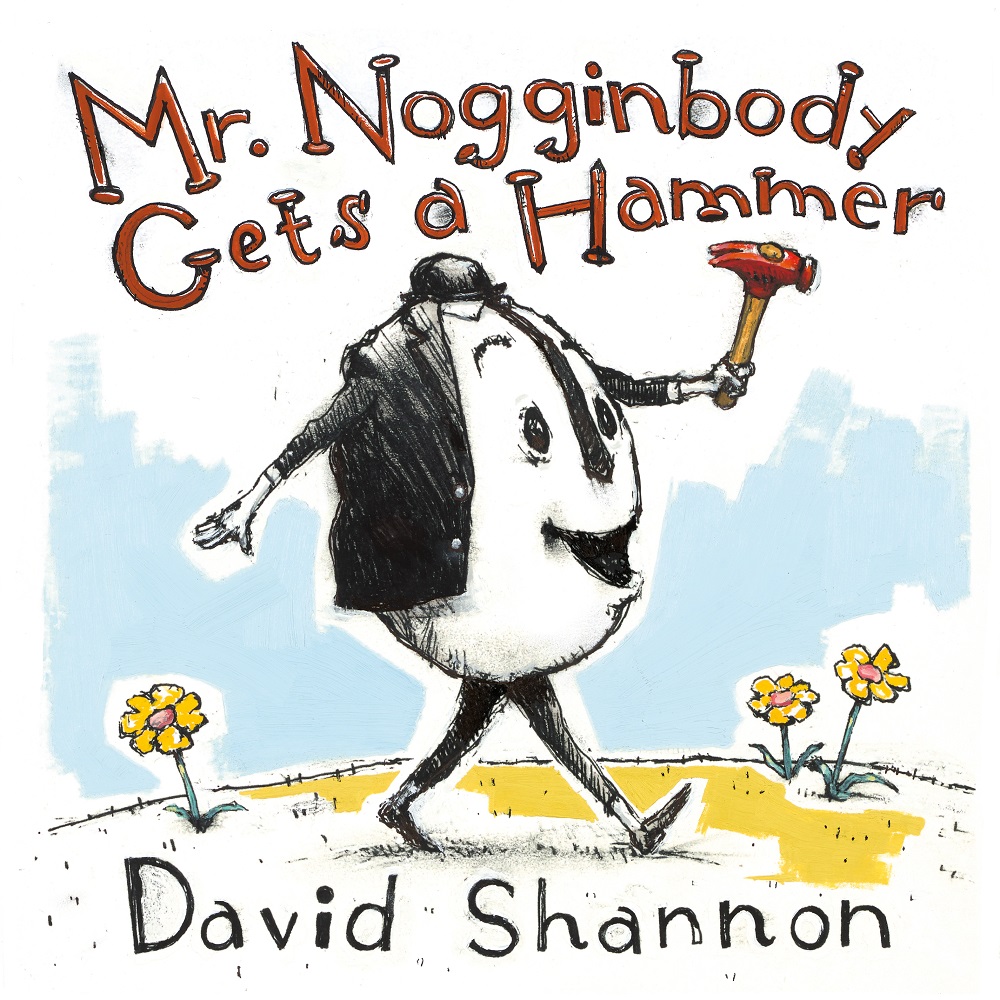 How did you develop the illustrative style of this book? How did Mr. Nogginbody get his look?
How did you develop the illustrative style of this book? How did Mr. Nogginbody get his look?
He started out as a doodle in my sketchbook--sometimes I like to draw "nonsense people." He made me laugh so I kept fooling around with him and drawing him doing different stuff.
You also worked with a very limited color palette. Mr. Nogginbody is entirely black-and-white and the pops of color come from the occasional flowers, signs, background shading. Did you make a conscious decision to keep this world primarily black-and-white?
Yeah, I always saw him as black and white in an odd little world, but I thought I was going to paint it. Usually I sketch out a book in pencil on tracing paper and paint the finishes, but this time the whole thing kind of evolved in my sketchbook with these ink drawings. I really liked their immediacy so I decided to use them for the book, with some minimal color added in paint to go with Mr. Nogginbody's pared-down surroundings. It ended up being a pretty significant departure--and a lot of fun!
The concept that "if all you have is a hammer, everything looks like a nail" has been attributed to Abraham Maslow, Abraham Kaplan, Mark Twain, the Buddha, the Bible, financier Bernard M. Baruch. Is this your sly attempt to get on that list?
Wow--you've done some research! I only knew about Maslow. I don't belong on that list, but I hope they'd all get a kick out of Mr. Nogginbody!
Rex Ogle's Free Lunch
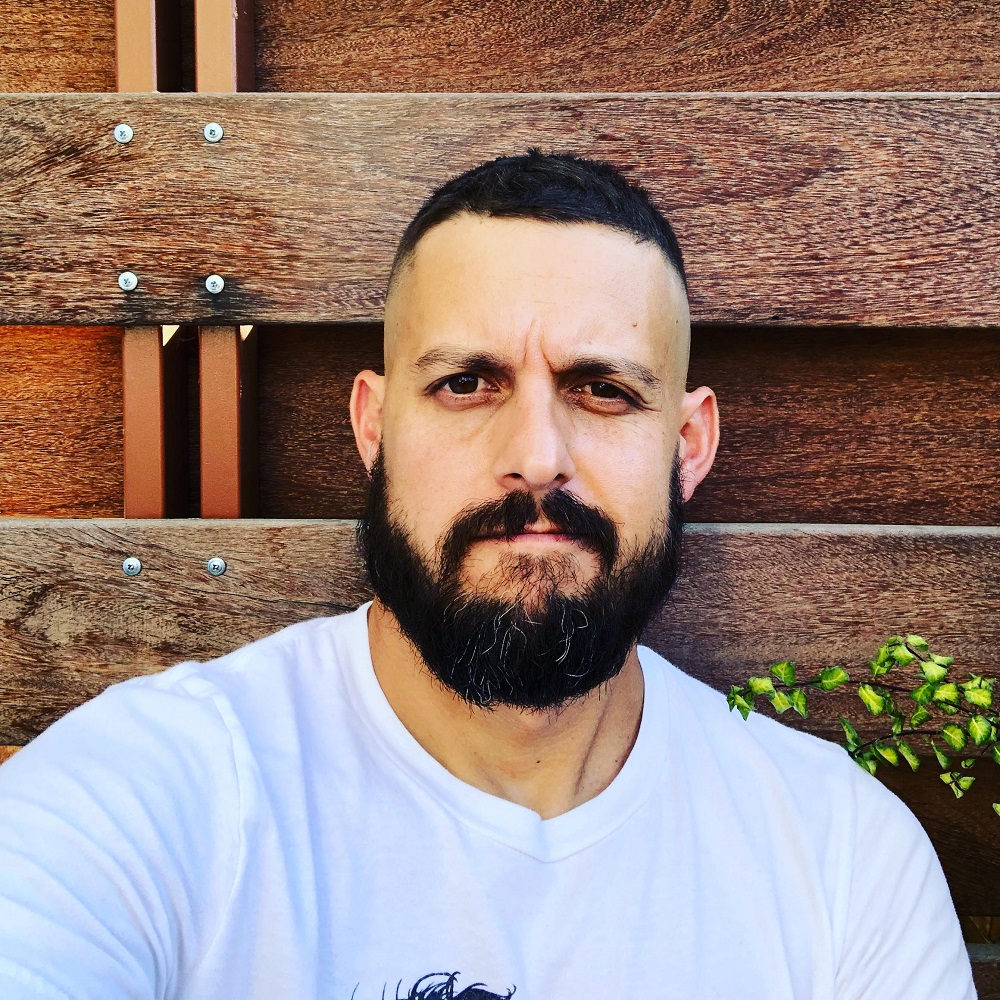 |
|
| photo: Rex Ogle | |
Rex Ogle began his editorial career at DC Comics, working on flagship titles like Justice League, Teen Titans and Superman/Batman. From there, he moved to Scholastic where he helmed New York Times bestselling series like Star Wars: Jedi Academy and Study Hall of Justice, and later, Little Brown for Young Readers, where he developed titles such as the Classroom 13 series and Neil Patrick Harris's Magic Misfits. Rex Ogle has more than 100 published titles in the children's space under various pen names, but is most proud of the ones he writes under his own name. Free Lunch is the story of Rex Ogle's first semester in sixth grade when he was on his school's free lunch program. Grounded in the immediacy of physical hunger and the humiliation of having to announce it every day in the school lunch line, Rex's is a compelling story of a more profound hunger--that of a child for his parents' love and care.
Thanks for chatting with Shelf, Rex! Free Lunch is your middle-grade debut. Why did you want to tell your story to this age group?
Middle grade readers are at that age where they are entering a difficult time in their lives. They're learning about themselves and the world, dealing with changing bodies and evolving friendships and dealing with heavy emotional issues. I wanted to share my story so that they could see a perspective that might either mirror their own, or be completely foreign to them. If my readers are dealing with similar things--like poverty or domestic violence--I hope it lets them know they aren't alone, and offers some hope. And if these difficult topics are alien to the reader, then perhaps it will give them some awareness and compassion for those dealing with these issues.
With my book, I also wanted to push the boundaries a bit. Not because I want to be salacious, but because we live in a world where young readers are exposed to heavy themes every single day--be it through TV or video games or music or movies or friends or the internet. As an uncle of six awesome youths, I want to keep my nieces and nephews as innocent as possible for as long as possible. But I also know they're more mature than adults give them credit for. Preventing exposure is impossible in today's world. So rather than try to hide them from difficult truths, I would like to enlighten them--gently and carefully--in order to start open and honest conversations about hard things they might not fully understand.
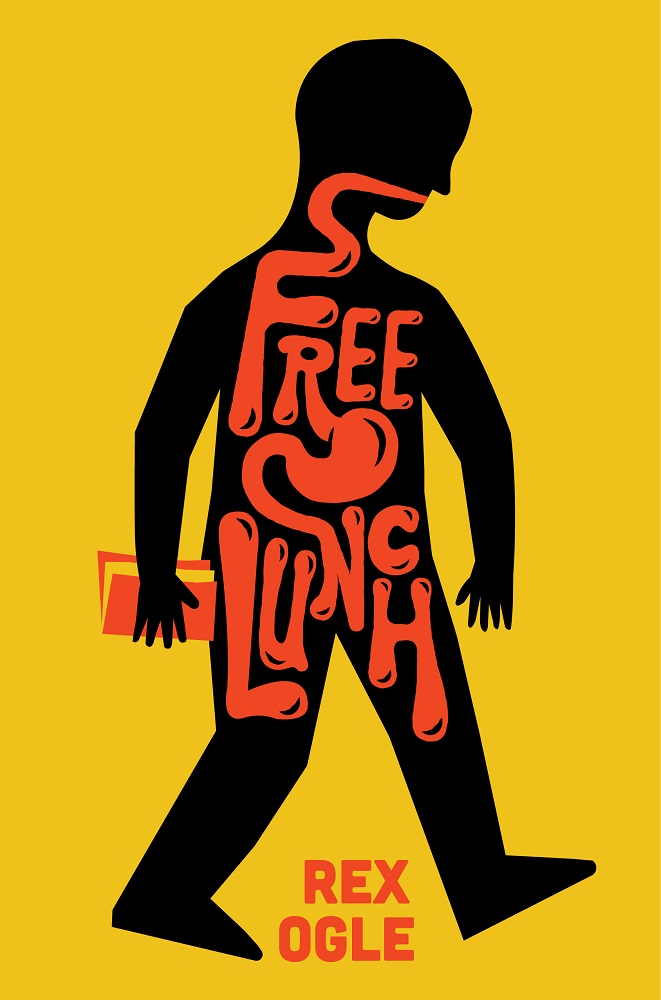 You have done a fair amount of writing for comics and graphic novels. How was the experience of writing Free Lunch similar? Different?
You have done a fair amount of writing for comics and graphic novels. How was the experience of writing Free Lunch similar? Different?
Writing graphic novels and comics is fantastic, because you're essentially sharing the workload with a team. With sequential art storytelling, the writer first writes the manuscript, which describes panels and offers dialogue. Then, the artist does the heavy-lifting. Sometimes there's also a different colorist, and of course the letterer. With prose, it's a very different kind of storytelling. The author has to rely exclusively on their own skills to "paint the picture" in the mind of the reader. Graphic novels are a collaboration, so even when you're telling a dark story you don't feel alone.
With prose--especially a memoir like Free Lunch--you're completely on your own.
Your story deals with very difficult topics. Was it hard to write those chapters?
Absolutely. Of all the things I've written, Free Lunch was the hardest thing I've ever written. For most of my life I've dealt firsthand with depression, anxiety and panic attacks. I've always wondered whether I was born with it, or if it was a direct result of my childhood. So, delving into my past to relive some of the more awful moments, I found myself having more anxiety than ever. In the end, it turned out to be a good exercise. I was able to confront those moments and remind myself that they were in the past, that I survived, that I was safe now and that my story might help others.



